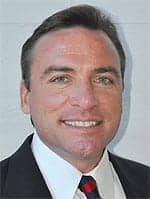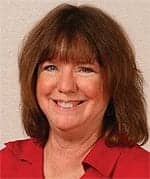
Matt Tomory

Lori Catron
Lacking networking and educational offerings for biomeds in the state of Arizona, a group of industry professionals—from BMETs and clinical engineering managers to regional account managers from service companies—banded together to create the Arizona Medical Instrumentation Association (AZMIA). Founded in 2008 on a platform of educating and unifying biomeds in the state, the AZMIA has grown to approximately 60 members concentrated primarily in the Phoenix area, with intentions to expand throughout the state.
“We got together because the state of Arizona was lacking any type of biomedical organization, so there was an obvious need,” says AZMIA President Matt Tomory, regional account manager at Conquest Imaging, Stockton, Calif. “So we formed the organization, which was founded primarily for educational opportunities. Then it grew to offer educational seminars and meetings, as well as sponsorship of the CBET test.”
In its brief existence, the association has benefited its members by offering educational sessions hosted by third-party service providers, original equipment manufacturers, and local colleges; social and networking events, which allow biomeds from various facilities to meet and collaborate in order to solve similar problems; and a vendor fair that showcases industry products and brings more attention to the association’s aims. However, Lori Catron, biomedical engineering manager at CHW St Joseph’s Hospital and Medical Center, Phoenix, and AZMIA vice president, who joined the organization after its inception, felt that initially, the organization was not doing enough for its members.
“I didn’t see as much of the educational offerings happening in the early formation of the group,” Catron says. “I wanted to see more impact, so we stepped that up, and we’ve also had third- party service providers come in—and Matt [Tomory] was one of them—and hold daytime educational forums at DeVry University in Phoenix. What we have done is foster the relationship between hospitals and DeVry University. I initially approached the employer liaison of the biomedical program at DeVry and talked to some of the professors, which led to an evening networking/DICOM/HL7 class for biomedical technicians pertinent to their development.”
Catron points out that this is not the first time an association like the AZMIA has been attempted in Arizona. “For whatever reason, it failed before,” she says. “It started and stopped numerous times. I can’t answer why, but I’d like to see it succeed this time because I do believe in the concept and what it provides for the industry. I think we need to strive for that continued longevity and success. And I think we will, but we’ll just have to learn from other states that have succeeded.”
A Successful Focus
Both Catron and Tomory believe that the key to success is focusing the educational and social offerings to the biomeds’ needs and interests. As such, the various leaders of the association poll their individual staffs on a regular basis to gain an understanding of what topics interest the biomeds. From those responses, the AZMIA leadership crafts the educational offerings.
“I interview my staff all the time and ask: What do you need? What do you want? What interests you?” Catron says. “I keep a list of their responses. That’s what we bring to the table and why we had a professor at DeVry present a networking class—because that’s what my staff asked for. Other AZMIA officers, such as Frank Cabrera, senior director for clinical engineering technology management at Banner Healthcare, Phoenix, do the same with their staff and bring their ideas to the table.”
Tomory also realizes that many of the members of the organization may not have any need for or interest in the business aspect of the association. So not only is customizing the educational content important, it’s also a goal of the AZMIA to streamline its offerings while making the business side of the association available but not mandatory.
“One of the things that I’ve done as president is separate the business meetings from the educational offerings,” Tomory says. “The members are welcome to attend the business meetings, but at general meetings, no business is discussed because some of our members find it boring. So our members are not exposed to the business side of the organization unless they choose to. We have to be organized as a business, but I’ve made an effort to separate that from the member offerings.”
This disinterest, however, is not something that can be easily remedied. Tomory and Catron both admit that one of the biggest problems facing the association is getting members consistently involved in events. This lack of attendance and engagement is one of the catalysts for surveying biomeds and customizing educational seminars to their desires, as well as separating the business aspects from the social and educational.
“It’s hard to get people to take time out of their private lives to attend an event, which is one of the reasons why I made it a goal of mine to separate the business part of the organization from the social and educational parts,” Tomory says.
Catron concurs, saying, “Keeping the membership engaged, excited, and involved is one of our biggest challenges. Maybe in the past, they didn’t feel they were getting enough back from the organization, and I think what they want are those educational opportunities. That’s going to be the key to our success: offering these opportunities in growth, development, and education on topics that are of interest to them. I think that is going to keep them engaged.”
Location, Location
Another one of the concerns facing the association is how to grow membership. One of the problems is easy to identify: location. Tomory notes that, with the association located in Phoenix, it is difficult to draw membership from outlying areas. He says that there are plans to start expanding the association in an effort to offer the same benefits to biomeds in other metropolitan areas, such as possibly opening a chapter in Tucson. With its current location, though, drawing in significant membership from other areas is problematic. “We’d like to grow,” Tomory says. “If you look at organizations like the California Medical Instrumentation Association, they have seven or nine chapters now; they’re just huge. One of the things we are trying to focus on is getting participation from organizations outside of those currently represented in the AZMIA. Currently, the organizations that are heavily represented are Catholic Healthcare West, Banner Healthcare, and Mayo Clinic Hospital, Scottsdale, Ariz—the primary sources of our members. We’re trying to reach out to the other organizations within the state and bring them into the fold.”
Another factor impacting membership is the size of the facilities in the area. Catron said that many of the larger facilities in the area are already participating in the association, but smaller, more remote medical centers have yet to join. So the AZMIA plans to increase membership with some old-fashioned, door-to-door salesmanship. Tomory has the benefit of being in the field for his position at Conquest Imaging and is able to connect with biomeds and clinical engineering managers through personal interaction. But the association also uses a vendor fair to solicit organizations for support and membership.
“We’re going to put more focus on expanding membership in 2011,” Catron says. “We had a vendor fair last year, and during that fair, myself and others walked around to the various vendors and tried to solicit their interest in joining the organization and supporting our efforts. We received a tremendous amount of support from the various manufacturers and third-party service providers at that vendor fair, so I’m sure we’ll step up those efforts in 2011.”
Catron also agrees that learning from and emulating similar successful associations will be important to the vitality of the AZMIA. “An initiative for the organization—or at least for me personally—is to find out how the biomed organizations in other states have maintained their longevity,” she says. “Getting advice from them on how they achieve their goals and how they keep their members engaged is important.”
Regardless of a medical center’s size or location, though, the AZMIA offers an important service to not only biomeds but also hospitals looking to save money. As Catron sees it, with facilities cutting budgets, the option of inexpensive biomed training is a responsible use of fiduciary resources. “Hospitals are watching their bottom line, and it’s getting harder and harder to find those dollars and send people out of state—lodging and airfare and everything else,” Catron says. “It makes more sense if we can bring the quality training to the technicians.”
Chris Gaerig is the associate editor of 24×7. Contact him at .



